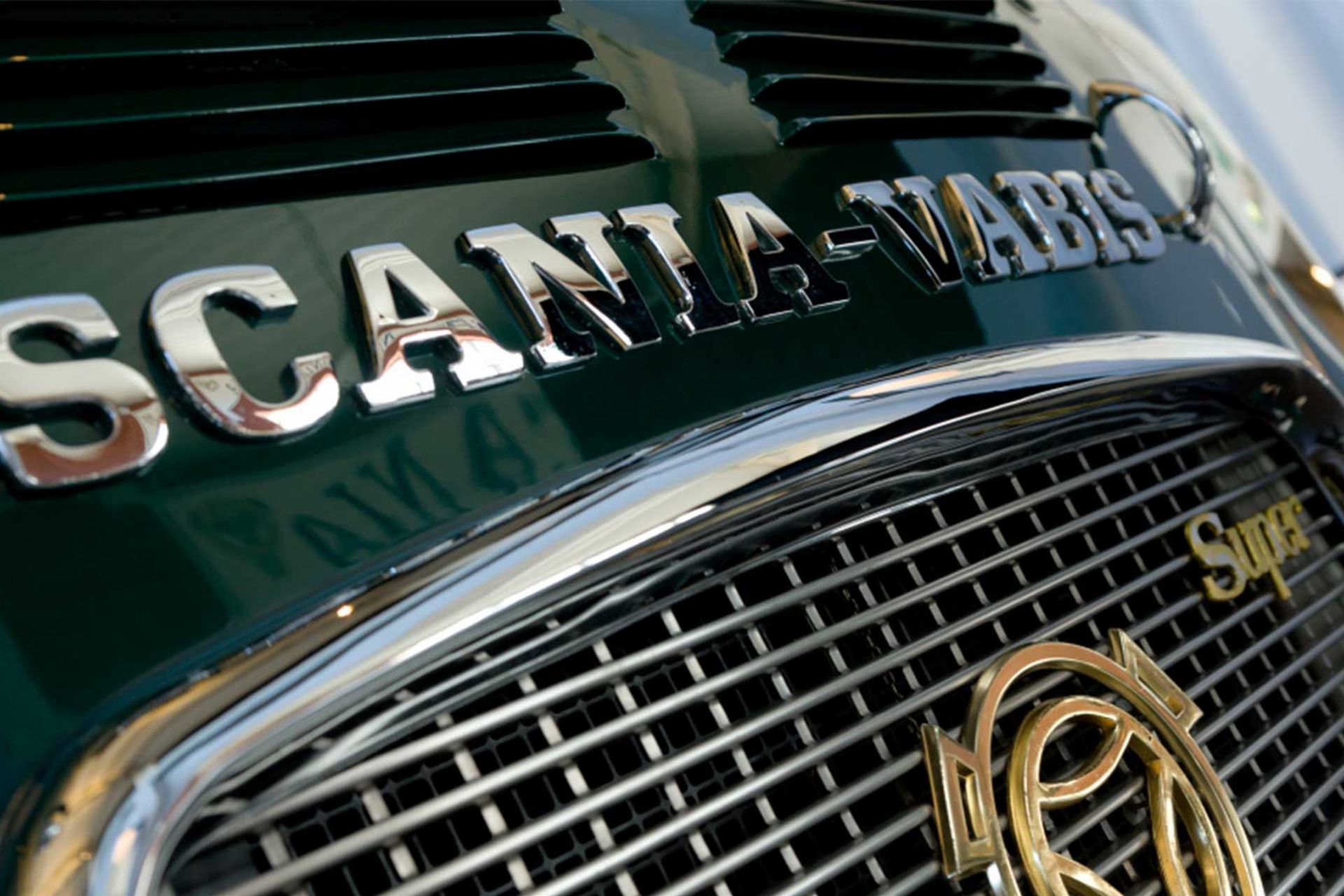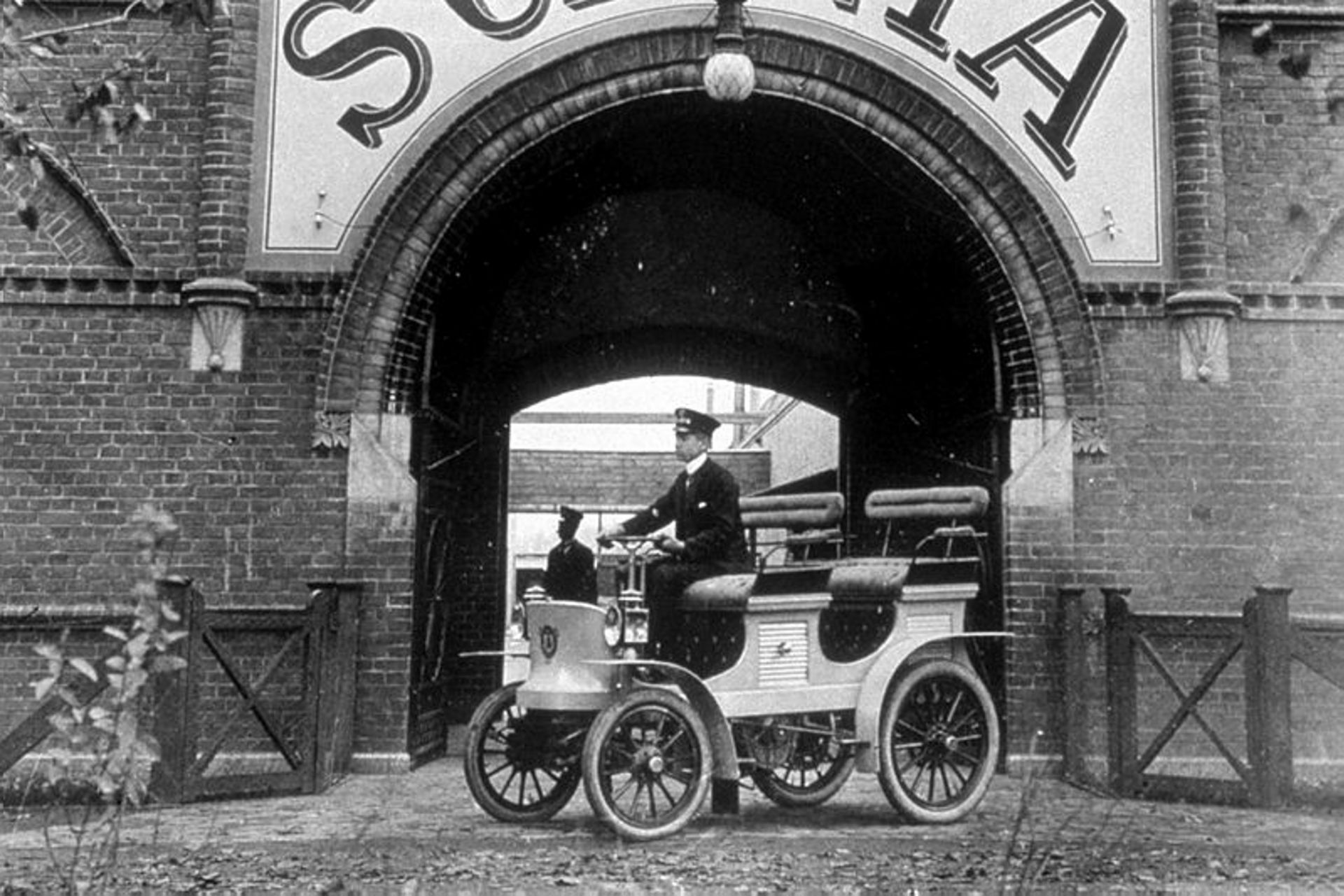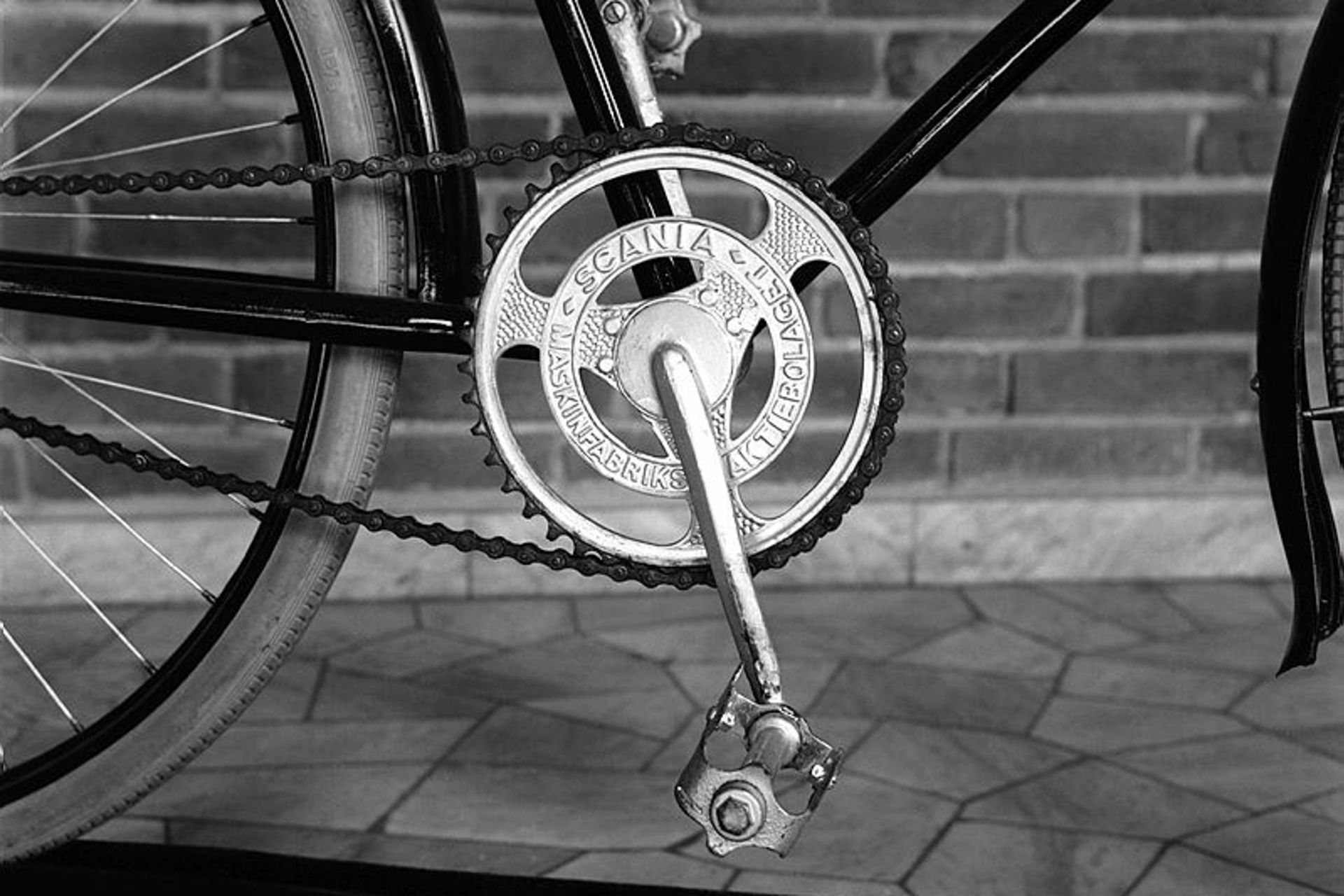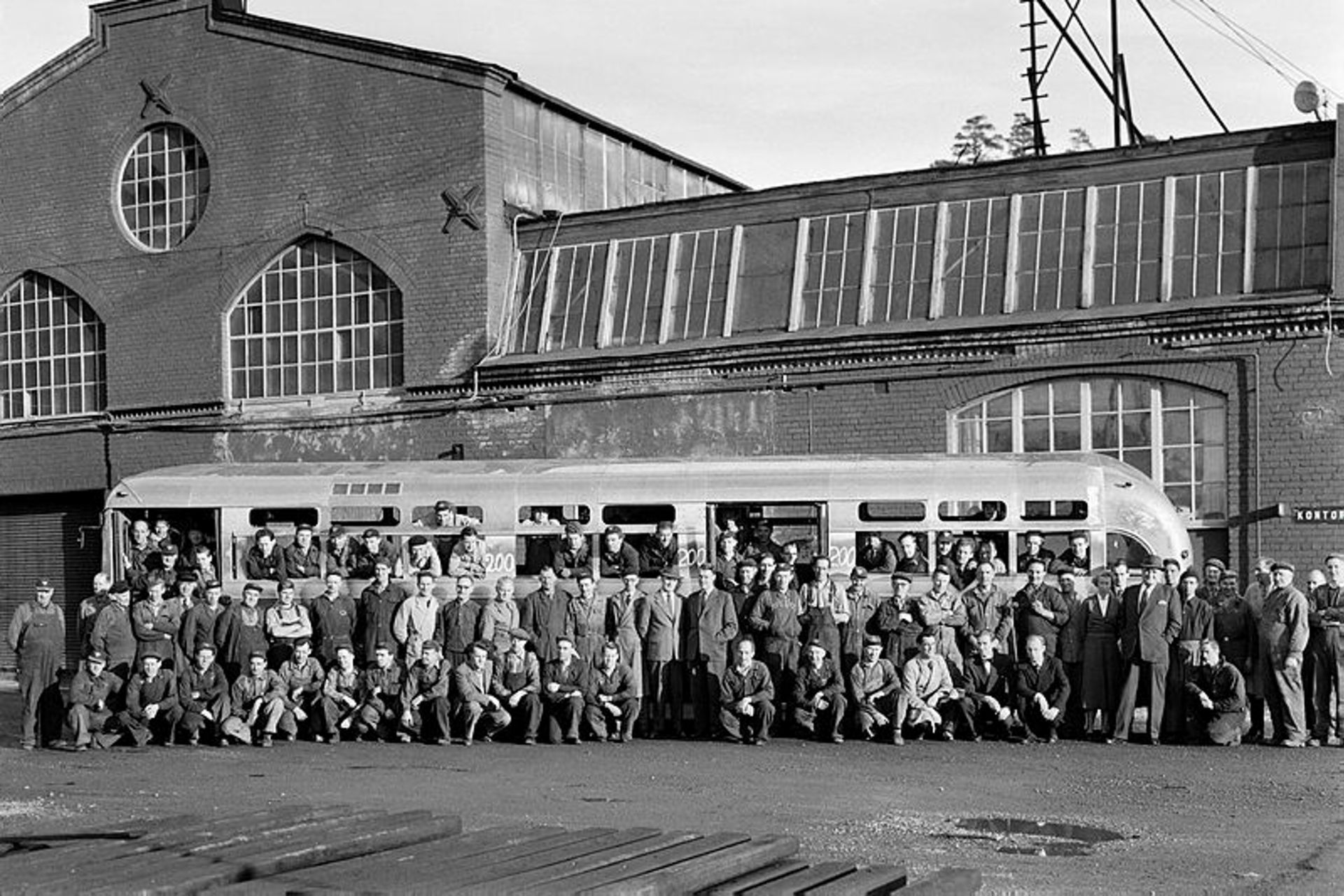Fate brought Swedish companies Vabis and Scania together for the first time in 1901. That same year saw Sweden host its first automotive exhibition. Södertälje-based Vabis and Malmö-based Scania both presented their first passenger car prototypes in the Swedish capital, Stockholm. We don’t know for sure if the two companies’ employees discussed their experiences or maybe even had lunch together during the event. But we do know that they definitely did this ten years later — regularly, in fact. This is because the two Swedish vehicle manufacturers merged in 1911 under the management of Scania’s director Per Alfred Nordeman to form a new company called Scania-Vabis. The merger was a success story from the very beginning, one that continues to this day.
It was preceded by some eventful years for both companies. Vabis had been founded in 1891 in Södertälje as a railway wagon factory, and did extremely well during the railway boom in Sweden. In search of new fields of business, the Vabis chief engineer at the time, Gustaf Erikson, built the first Swedish automobile back in 1897 — the very vehicle that was later shown in Stockholm.
Scania was founded in 1900 in Malmö as a bicycle factory. It wasn’t long, however, before this company, too, turned its attention to automobiles, back then still a novelty, and manufactured a passenger car using purchased components — which was also part of the exhibition in Stockholm. The two companies were completely independent from each other at this point. This was still the case in 1902, when trucks rolled off their production lines for the first time. In the years that followed, Scania’s vehicle business developed slowly, but steadily. Vabis, on the other hand, was heading toward a crisis. Why? Even though the company had its own passenger car and truck models, its main business remained the construction of wagons. However, since the Swedish railway network was largely complete, there was barely any need for new railway cars.
There was a whole lot of disparity between the two companies when Scania’s director Alfred Nordeman had the groundbreaking idea to merge them together. He was right in thinking that both parties would benefit from this new relationship: Scania got the production capacity it desperately needed. Vabis, in turn, was able to focus entirely on a promising new market. This was the result of Nordeman completely restructuring Scania-Vabis: from that point on, the company no longer produced any bicycles or wagons, instead focusing only on trucks, buses, and automobiles.
The product range was streamlined further in 1921, with Scania-Vabis stopping the production of passenger cars. Those responsible had realized that focusing on trucks and buses would be a much better way to bundle their engineers’ competencies. This decision soon bore fruit. The number of vehicles produced rose. Time and time again, Scania-Vabis surprised its customers and the automotive community with its innovations. Some of those, like the first cab-over-engine bus (1932) or the first cab-over-engine truck (1939), came courtesy of the company’s own development department. Others were brought to life with the support of partners. In 1949, for example, Scania-Vabis presented a diesel engine with a direct injection system, which it had developed in cooperation with Leyland, a British vehicle manufacturer. In 1953, the C50 Metropol city bus was born as a result of a joint venture with US commercial vehicle manufacturer Mack. In return Mack imported thousands of Scania-Vabis engines over the following decades, to use in their own applications.
1969 saw Scania-Vabis merge with Saab, a Swedish aircraft and automotive manufacturer. As a result, the Södertälje company became a division of the Saab-Scania Group — losing the “-Vabis” part of its name. What did remain of the truck and bus specialist was its systematic customer focus. This became clear once again as the legendary 14-liter V8 diesel engine was presented at the IAA exhibition in 1969. Back then, this power unit was the most powerful truck engine in Europe, becoming a flagship for Scania. Much like efficient reliability, the V8 continues to be emblematic of the company to this day.
After 26 supremely successful years, Scania split from Saab in 1995. This was driven by industry policy decisions taken by Saab and US automotive manufacturer General Motors, who joined Saab-Scania in 1989. It also meant that Scania became an independent company. The new 4-series truck range was introduced in the same year, designed in collaboration with the Italian Bertone studio, which excelled technologically thanks to its Opticruise automatic transmission. A year later, the long-haul vehicles from the range won the “European Truck of the Year” award.
The last big merger in Scania’s history so far was initiated in 2000, when Volkswagen AG acquired an interest in the Swedish company. Scania was eventually integrated into the VW Group as a new brand in 2008. Today, the Swedish company is part of the TRATON GROUP, previously known as Volkswagen Truck & Bus, whose shares are listed on the stock exchanges in Frankfurt am Main and in Stockholm.



